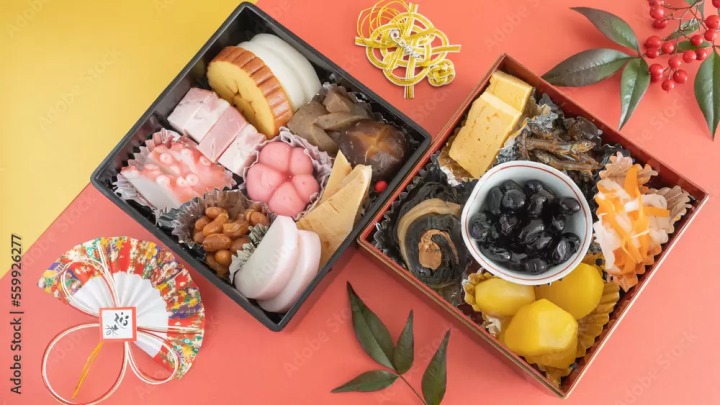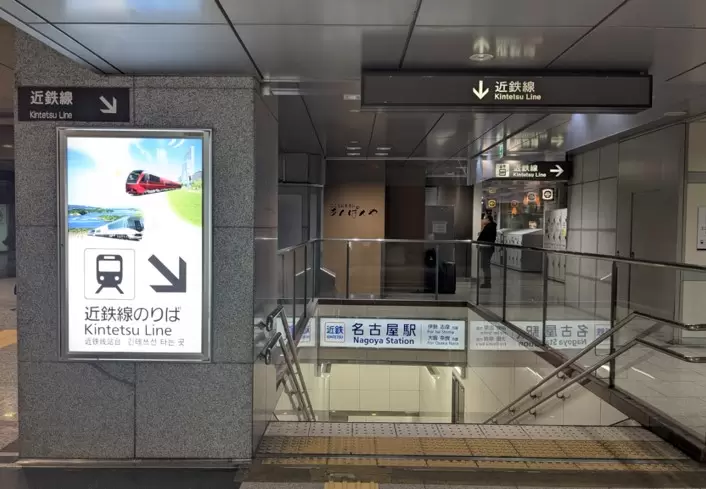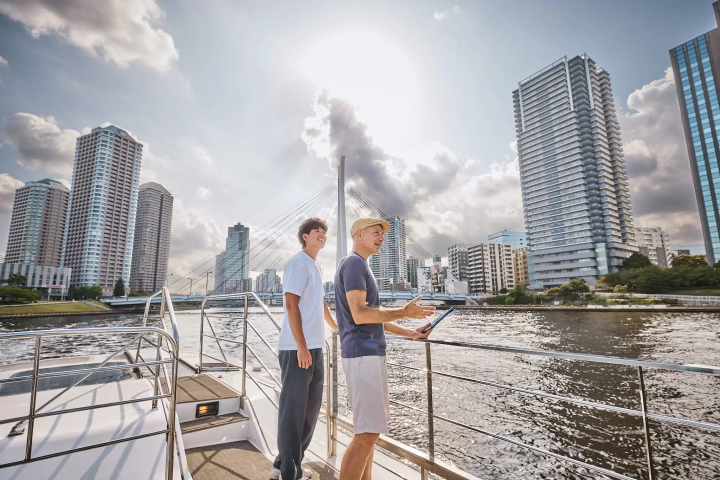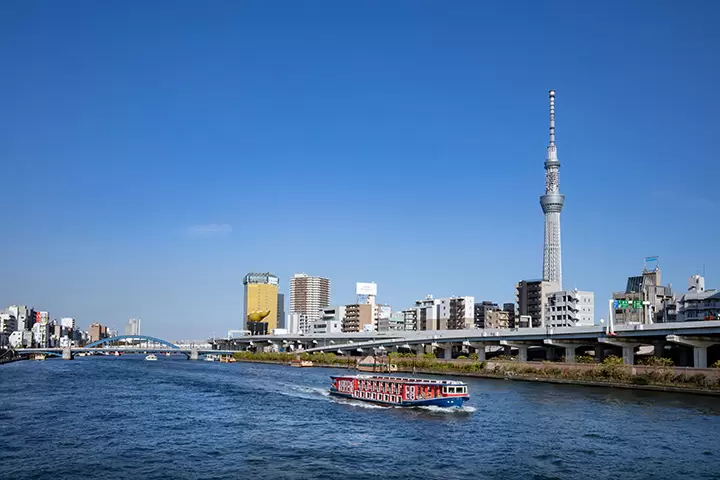Japan, Off The Beaten Path - Happy Days In Hakone

Hakone, located southwest of Tokyo, is loved for its amazing views of Lake Ashi and Mt. Fuji, as well as for its delicious treats. Susan Spann, the author of the Hiro Hattori novel series, tells us about the Hakone visit that gave her the chance to experience a volcano with all the five senses.
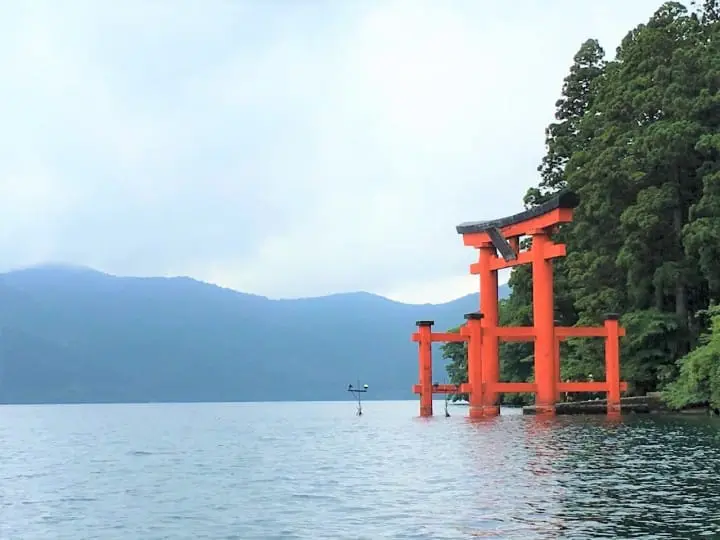
From hiking trails to pirate ships and art museums to geoparks, the hot spring resort of Hakone—about 90 minutes south of Tokyo—has tons to offer for a weekend getaway. Last month I returned to Hakone to enjoy a few of the many adventures this beautiful, historic location has to offer.
Riding the Hakone Circuit: Gondolas, Trains, and Cable Cars
I arrived at Hakone-Yumoto Station early on a sunny morning and boarded the Hakone Tozan Train for the 40-minute scenic ride to Gora Station, almost 500 meters higher up the mountain.
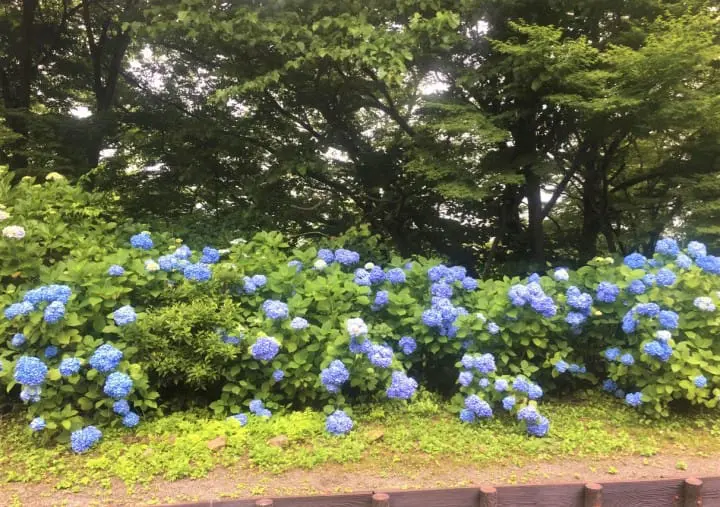
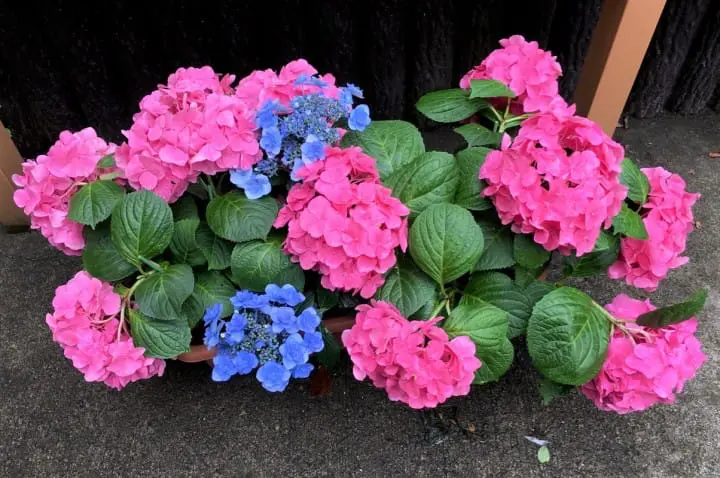
Along the way, I enjoyed breathtaking mountain views and the bright green leaves of Hakone’s famous hydrangeas growing beside the railroad tracks. Although the plants don’t bloom until late May and early June, their bright green leaves suggested summer was just around the corner.
In Gora, I transferred to the Hakone Tozan Cable Car for the ten-minute ride to Sounzan. My anticipation grew as the cable car rumbled up the steeply sloping track, where I planned to ride the Hakone Ropeway across the mouth of a live volcano.
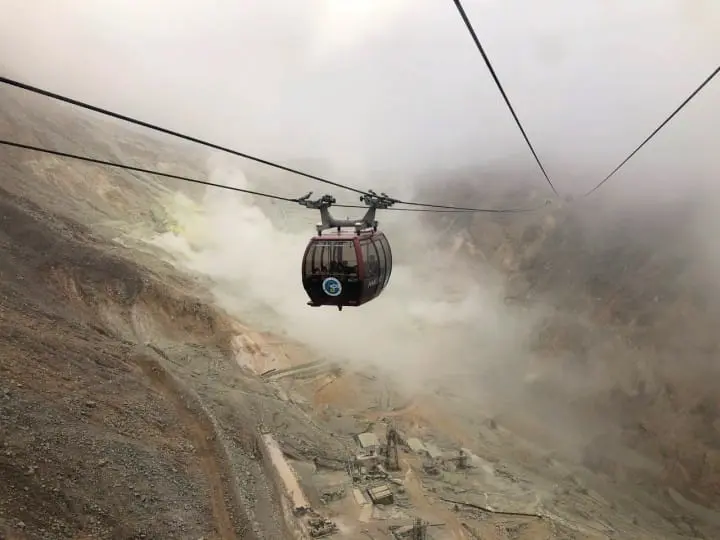
The glass-sided gondolas of the Hakone Ropeway can hold more than a dozen passengers, but the day I visited the lines were short, and our gondola held only five. I sat on the front bench seat and tried to refrain from bouncing up and down with excitement as the gondola started up the mountain toward Owakudani.
Looking backward, past Sounzan Station, I saw an enormous version of the Japanese kanji for “Large” or “Great” (大) cut into the side of nearby Mt. Myojogatake. Each August, logs are carried up the mountain to the site, and the enormous kanji is set ablaze as part of the Obon festival.
As the gondola approached the top of the mountain, I faced forward again, anticipating not only the sight of Owakudani’s smoking crater but the possibility of seeing Mt. Fuji, which is visible from the ropeway in clear weather. Mt. Fuji was not in a cooperative mood, but I still enjoyed the volcano’s steaming fumaroles and brilliant yellow sulfur deposits.
Lunch on a Live Volcano
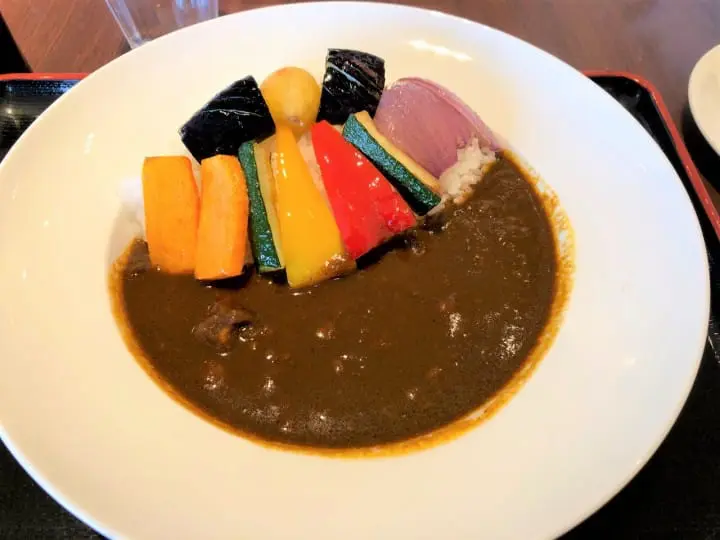
The gondolas dropped us off on the far side of the crater, and I enjoyed a lunch of savory “Owakudani black curry” with vegetables at a restaurant overlooking the volcano. The rich pork curry had a tangy flavor, hotter than most Japanese curry but delicious--and appropriate for a dish named after Owakudani. For dessert, I ordered a cola float that cooled my taste buds from the curry’s heat.
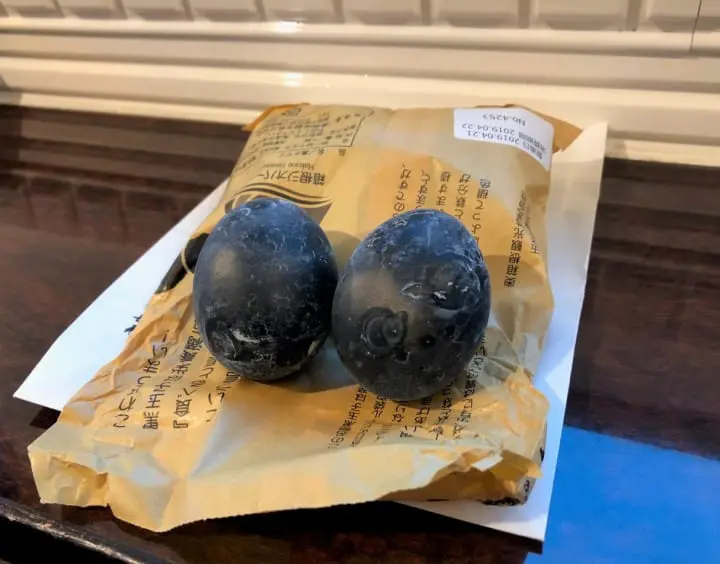
After lunch I viewed the crater from the outdoor observation platform. Hissing fumaroles sent gouts of sulfur-scented steam into the air. The eggy scent reminded me to visit the gift shop for a bag of famous Owakudani “black eggs,” boiled in the sulfurous springs of the volcano. Eating one of these delicious black-shelled hard-boiled eggs supposedly adds seven years to your life (and if so, I’ve earned myself several extra decades.)
Across Lake Ashi by Pirate Ship
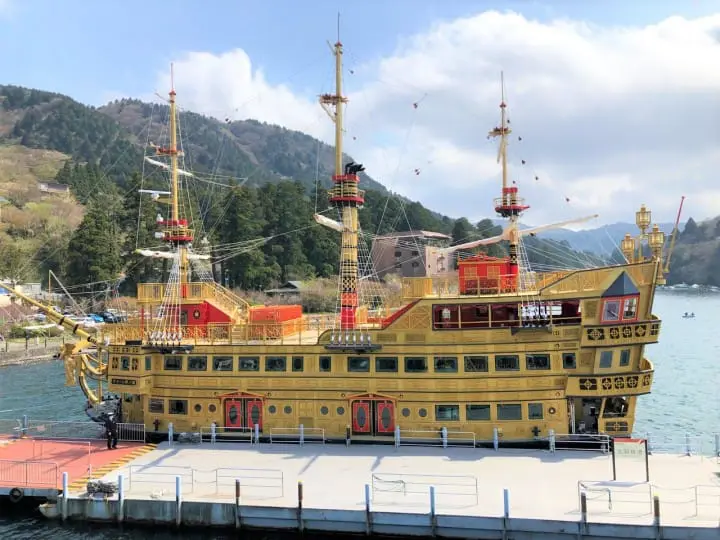
Later, I rode the Hakone Ropeway down the far side of the volcano to Togendai, a port on the north end of Lake Ashi, and boarded one of Hakone’s famous pirate ships for a 30-minute sightseeing cruise. Deep green mountains rose on all sides of the volcanic lake, which never freezes, even in the winter.
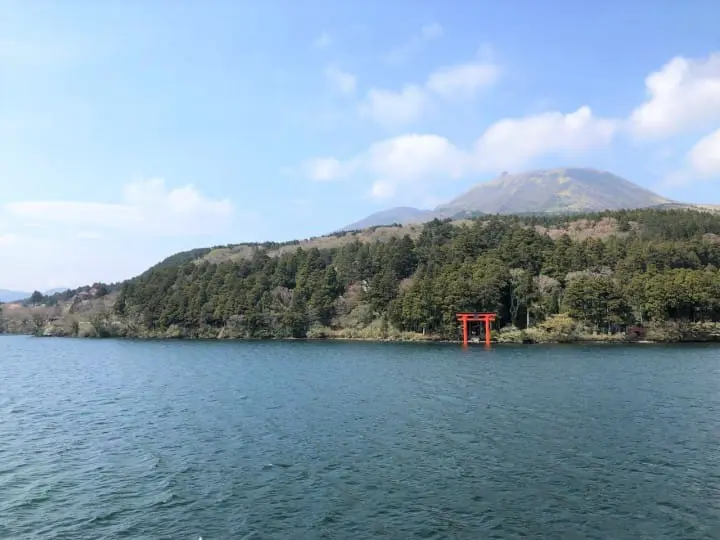
Refreshing winds whipped through my hair as I stood on the deck to enjoy the view. All too soon I spotted the bright vermillion water gate of Hakone Shrine, and then the charcoal-colored traditional buildings of the Hakone Barrier—an exact reproduction of the historical 16th century checkpoint on the Tokaido Road where people had to stop for official inspection while traveling between the capital city of Edo (now called Tokyo) and the former capital city of Kyoto.
Crossing the Hakone Barrier
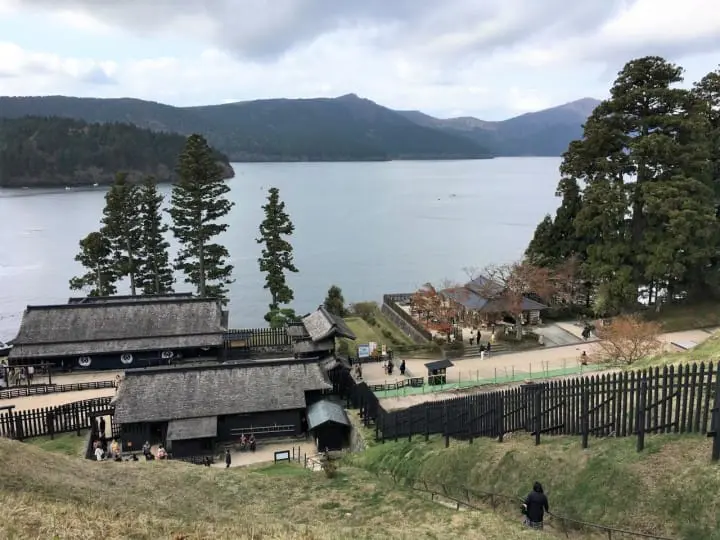
I disembarked from the pirate ship at the southern port of Hakone-Machi and headed for the barrier, just a five-minute walk away. The reconstructed checkpoint looks exactly as it did in the 16th century, down to the furniture and artifacts inside the barracks and the officers’ quarters.
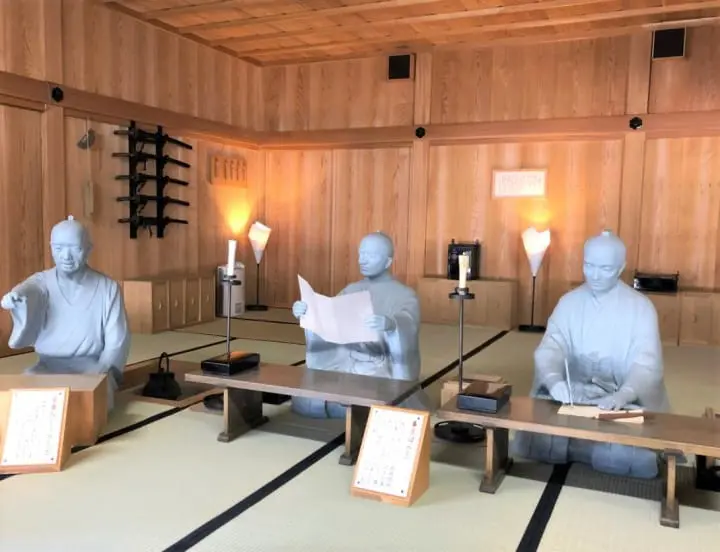
This attention to detail extends to the human figures inside the buildings (and the horses in the stable) which were left a colorless gray because historians did not know exactly how to color people’s clothing (and the horses’ hair), so the decision was made to leave the figures “blank” to avoid inaccuracy.
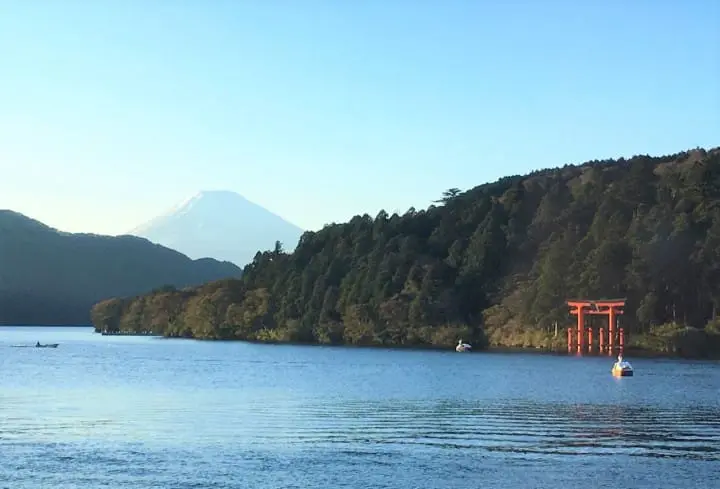
In addition to visiting the primary buildings and the Barrier Museum, I climbed the steep stone steps to the old watchtower site. From its location high on an adjacent hill, I looked down on the barrier station and across Lake Ashi to Mt. Fuji, who decided to make an appearance after all.
Evening at the Hot Springs
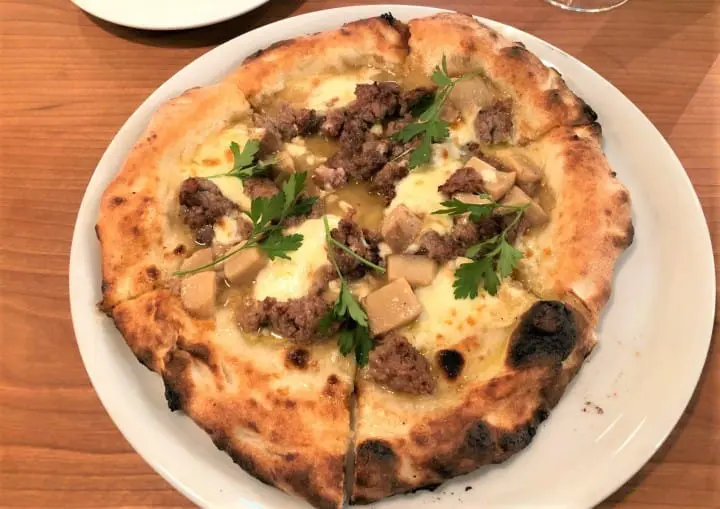
By the time I finished exploring the Hakone Barrier, my stomach had begun to growl. I caught an express bus back to Hakone-Yumoto, eagerly anticipating dinner at one of my favorite restaurants in Japan, 808 Monsmare, whose wood-fired pizza is the best I’ve eaten anywhere in the world. (My favorite is the pizza fungi, which features mushrooms, smoked mozzarella, and fresh sausage.) The thin, chewy crust has just the right amount of crunch, and the savory toppings complement one another perfectly.
With sunset fast approaching, I checked into my hotel, put on a yukata (a casual kimono) and headed to the onsen (volcanic hot spring bath) at my ryokan. As I soaked in the luxurious, steaming water, it occurred to me that Hakone let me experience a volcano with all five of my senses.
I had seen the smoking crater, smelled its sulfur and heard the fumaroles hiss. I tasted black eggs boiled in the volcanic springs, and my day came to a relaxing end with the relaxing feeling of a soak in the volcanically-heated water of the onsen. That had never occurred to me before, and it gave me yet another reason to enjoy my happy days in Hakone.
Text and photos by Susan Spann
Susan Spann is the author of the Hiro Hattori mystery novels. She lives in Tokyo, but frequently travels across Japan, climbing mountains and seeking adventures off the beaten path. You can find her online at www.susanspann.com.
Susan Spann is the author of the Hiro Hattori mystery novels. She lives in Tokyo, but frequently travels across Japan, climbing mountains and seeking adventures off the beaten path. You can find her online at www.susanspann.com.









































